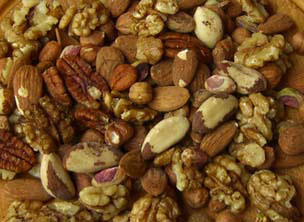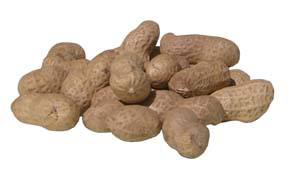|
|
|
'May contain' warnings get ever more complicated... |
|
This article is based on Michelle Berriedale-Johnson's blog describing the issues which arose in the course of judging the 'foods suitable for nut/peanut allergics' category of the 2015 FreeFrom Food Awards. |
|
Way back.... Nuts as an ingredient No nuts in the ingredients; no nuts in the factory This is not an easy question to answer as it depends not only on the rigour of the cleaning and manufacturing protocols in the factory but on what they are actually manufacturing. So, for example, the Alpro nut/soya milk would have been fine as it is perfectly possible to clean down equipment that has been used for a liquid product such as a nut milk to guarantee that there will be no residue. However, were you making chocolate it would be a totally different matter. Chocolate is notoriously sticky and difficult to clean and no matter how wonderful your cleaning protocols, it would be impossible to guarantee that there would be no peanut/nut residues. But the allergen labelling on these products does not tell you any of this so you have no way of assessing the risk you might be running in eating a nut/peanut-free product with a 'made in a factory that also uses nuts' warning on it. Play it safe Transparency and traceability The chances of wheat contamination in a field of oats grown next door to the wheat (or milled the same mill as the wheat) is very high. But that may not always be the case. If the ingredient is very heavy or solid, then it is unlikely to blow around (as would the wheat) or spill out of containers, so the contamination risk could be very low. And another problem. If the ingredient comes from another country where transparency and labelling is not as stringent as it is in the UK/Europe (as many 'freefrom' ingredients do) there may be no way of finding out whether or not it could have been contaminated by an allergen as no records will exist. And what if this ingredient is only used in a tiny quantity so even if it were contaminated the amount of protein would be vanishingly small? In either case, even though the ingredient may in fact be totally safe, the honest manufacturer using it will not be able to declare that the ingredients are totally nut/peanut/relevant allergen free as they cannot prove it – and will therefore have to add a nut warning. The fall out in practice But Alexa suggested that even nut allergics need to live in the real world and, realistically, the risk of nut contamination of an ingredient used in such a tiny quantity was so small that it did not present a 'real' risk. She maintained that the manufacturer should be congratulated on being so open and transparent and that the allergic person wanting to buy the product should make their own informed assessment of the risk and act accordingly. A perfectly reasonable and sensible suggestion – provided that you are both willing and able to make that assessment and are comfortable with the responsibility of making the choice. The Anaphylaxis Campaign's position is that manufacturers should follow the very good guidelines set down by the Food Standards Agency which state that 'advisory labelling on possible cross-contamination with allergens should be justifiable only on the basis of a risk assessment applied to a responsibly managed operation. Warning labels should only be used where there is a demonstrable and significant risk of allergen cross- contamination and they should not be used as a substitute for Good Manufacturing Practices'. One can only hope that the situation gradually settle down as 'freefrom' manufacturers become more sophisticated, the concept of detailed risk assessment becomes more widely understood and practised and more 'dedicated' nut/peanut/ gluten/dairy etc facilities are built. What would also help enormously would be EU agreement on, and implementation of, allergen thresholds or 'action levels' for allergens other than gluten so that both manufacturers and consumers know what 'freefrom' actually means and can work towards it. First published in January 2015 If you found this article interesting, you will find many more articles on peanut and tree-nut allergy here, and reports of research into the conditions here. |

 'May contain nuts/trace of nuts' warnings are becoming ever more complex and ever more difficult to interpret. It is not nuts themselves that are the problem, but the confusion arising from the laudable efforts of regulators and manufacturers to improve allergen labelling for the benefit of allergic consumers. But, nuts being at the sharp end of the allergy experience, nut labelling takes much of the flak.
'May contain nuts/trace of nuts' warnings are becoming ever more complex and ever more difficult to interpret. It is not nuts themselves that are the problem, but the confusion arising from the laudable efforts of regulators and manufacturers to improve allergen labelling for the benefit of allergic consumers. But, nuts being at the sharp end of the allergy experience, nut labelling takes much of the flak. This whole question arose during the course of the
This whole question arose during the course of the 










